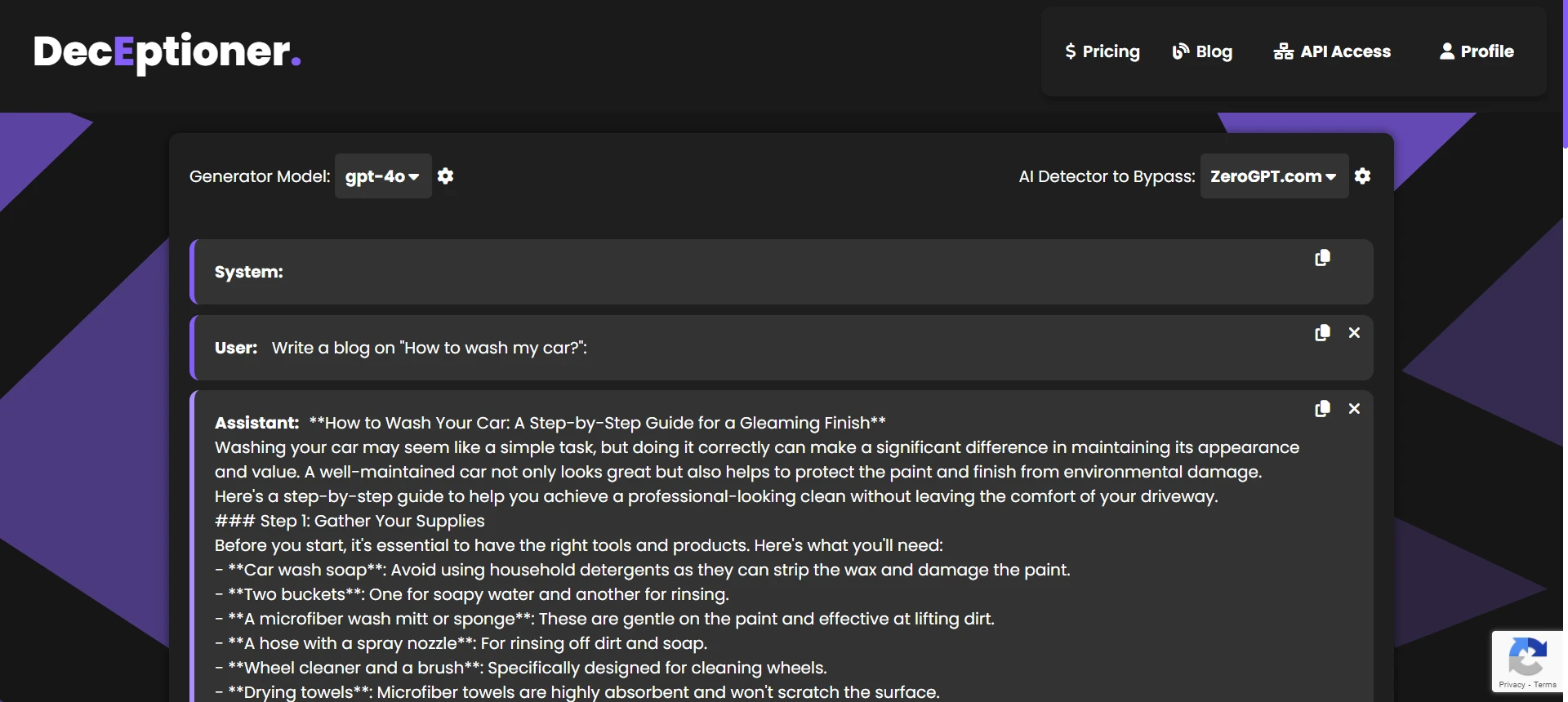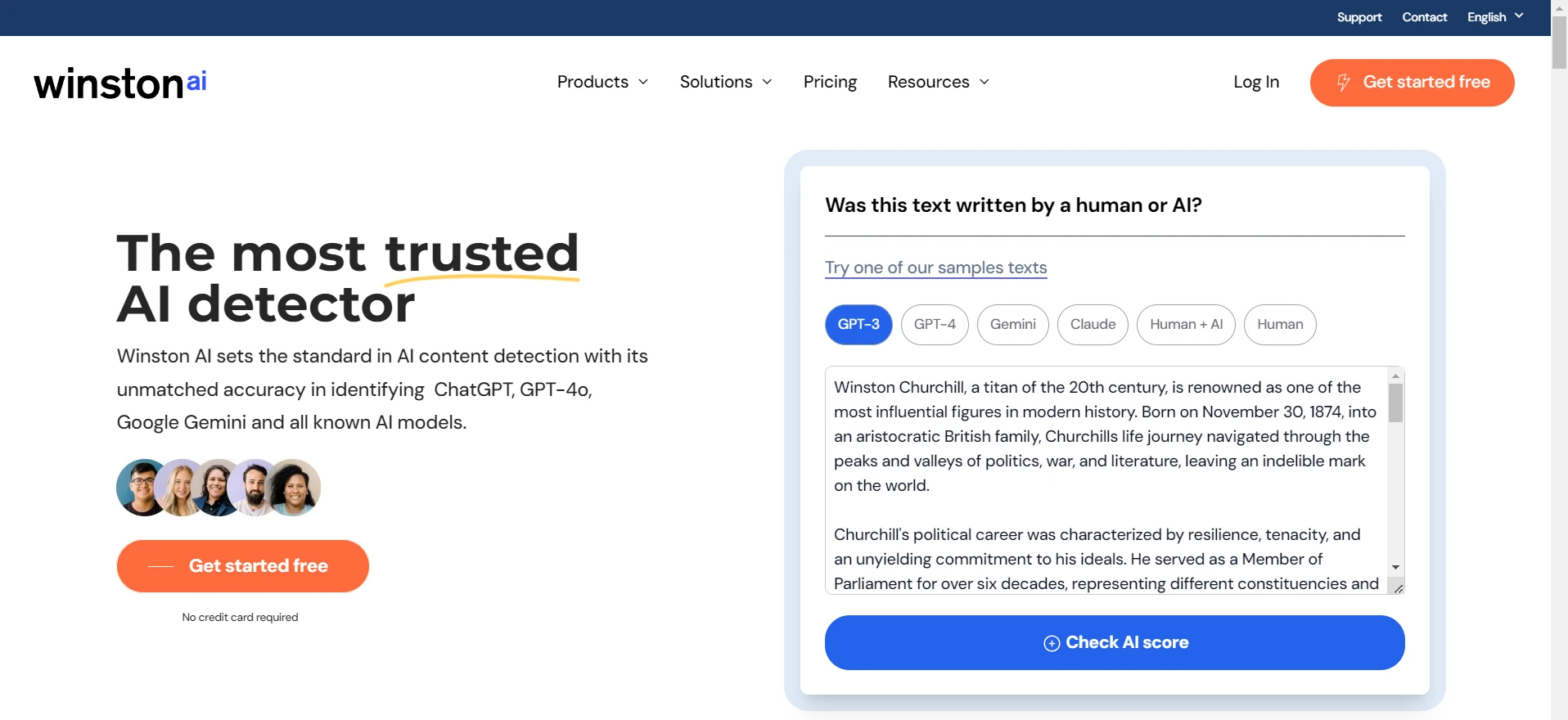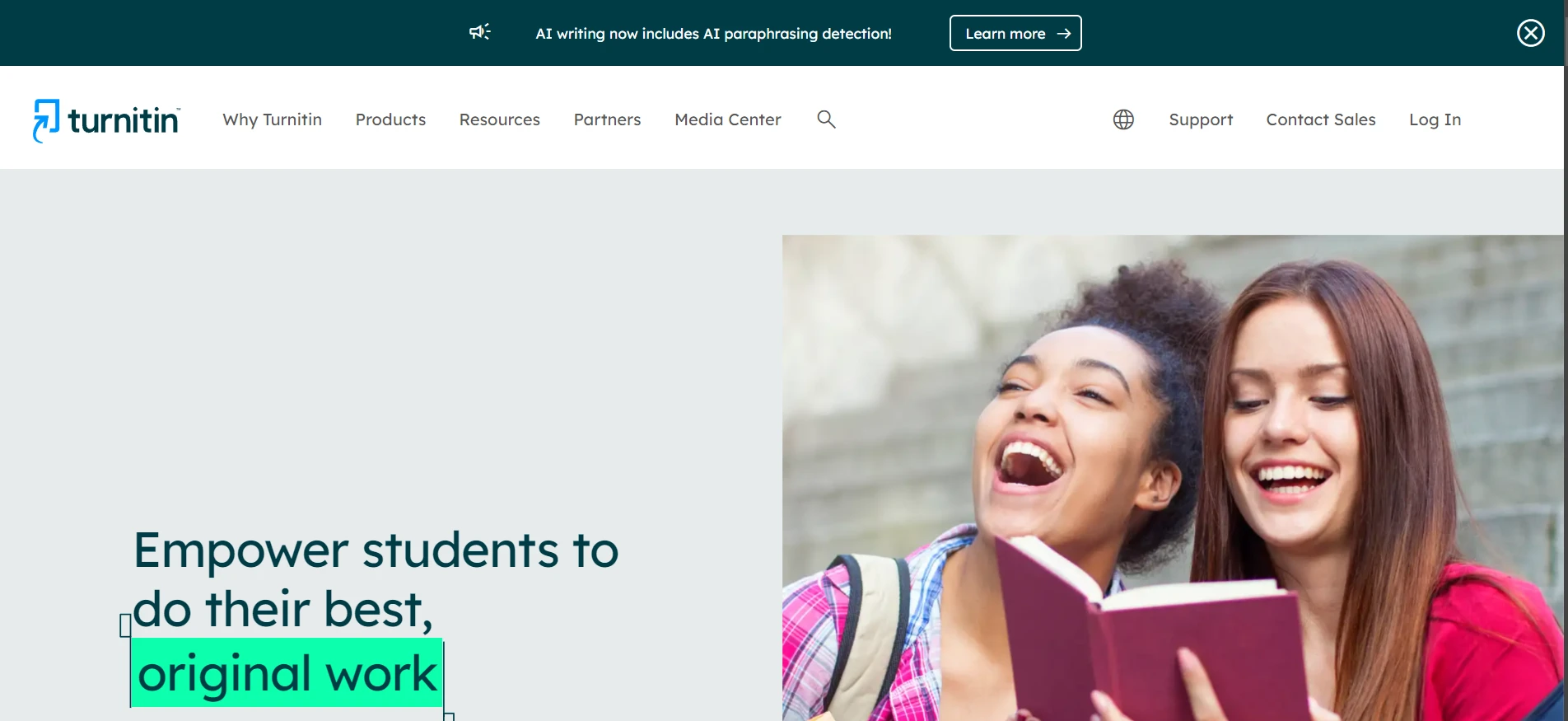As we all know it Deepseek gets flagged quite often by Turnitin. However, is it the same with Gemini? The short answer is that there are decent odds for both the outcomes. The longer answer is the devil lies in the details. Keep reading to know more about it.
Why does Gemini get detected by Turnitin?
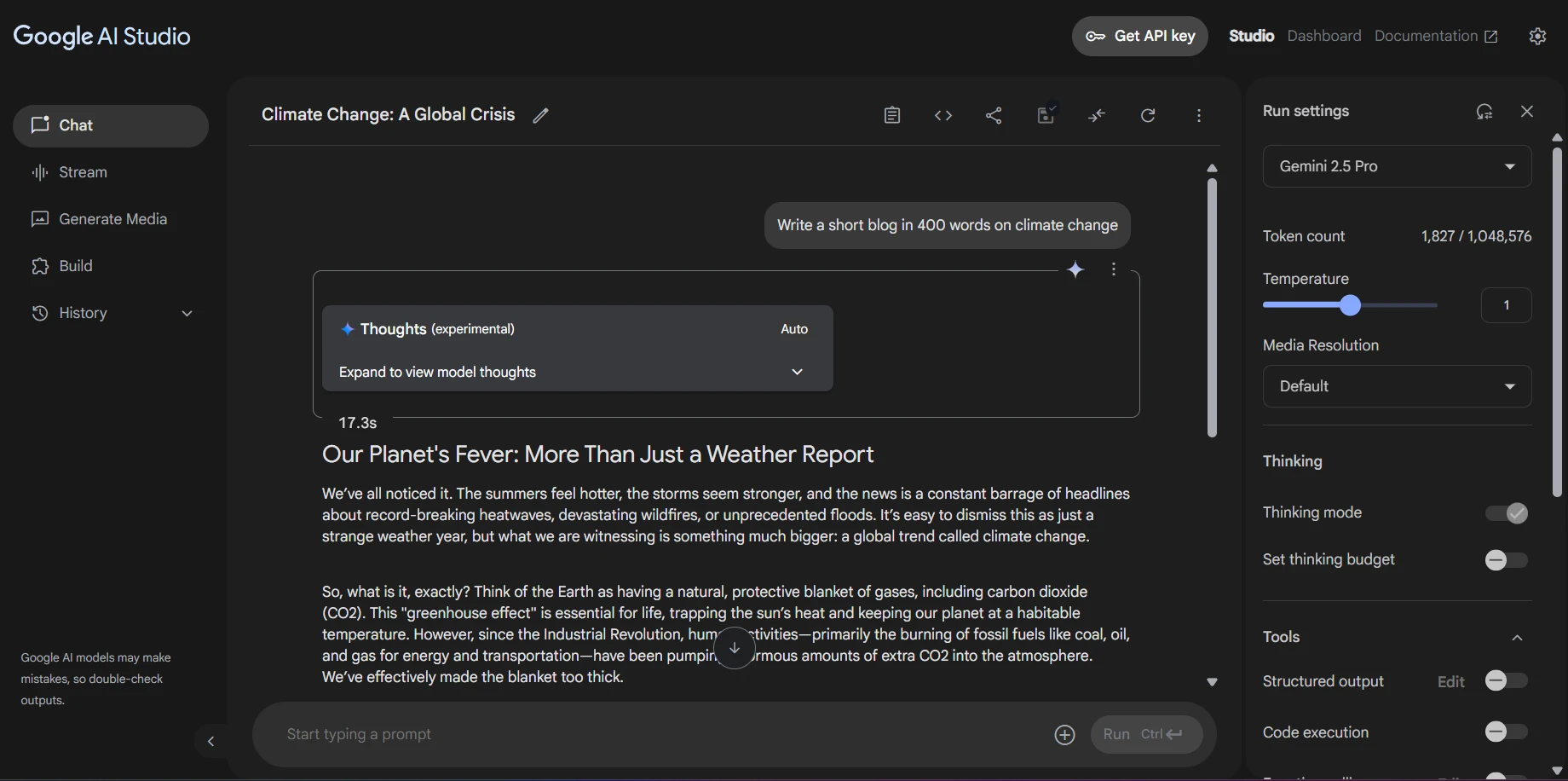
The simplest answer is just like Deepseek or Claude, Gemini is not particularly made to bypass AI detectors like Turnitin. It is a general purpose LLM. The creators of Gemini (whether it’s gemini-2.5-flash or gemini-2.5-pro) do not advertise “bypassing Turnitin” as one of their features. Hence, if it is not made to accomplish this task it won't be able to consistently evade Turnitin’s algorithms. If you want to bypass it consistently then you need to use a dedicated humanizer like Deceptioner.
Turnitin's AIW-2 & AIR-1 – A two-model detection system
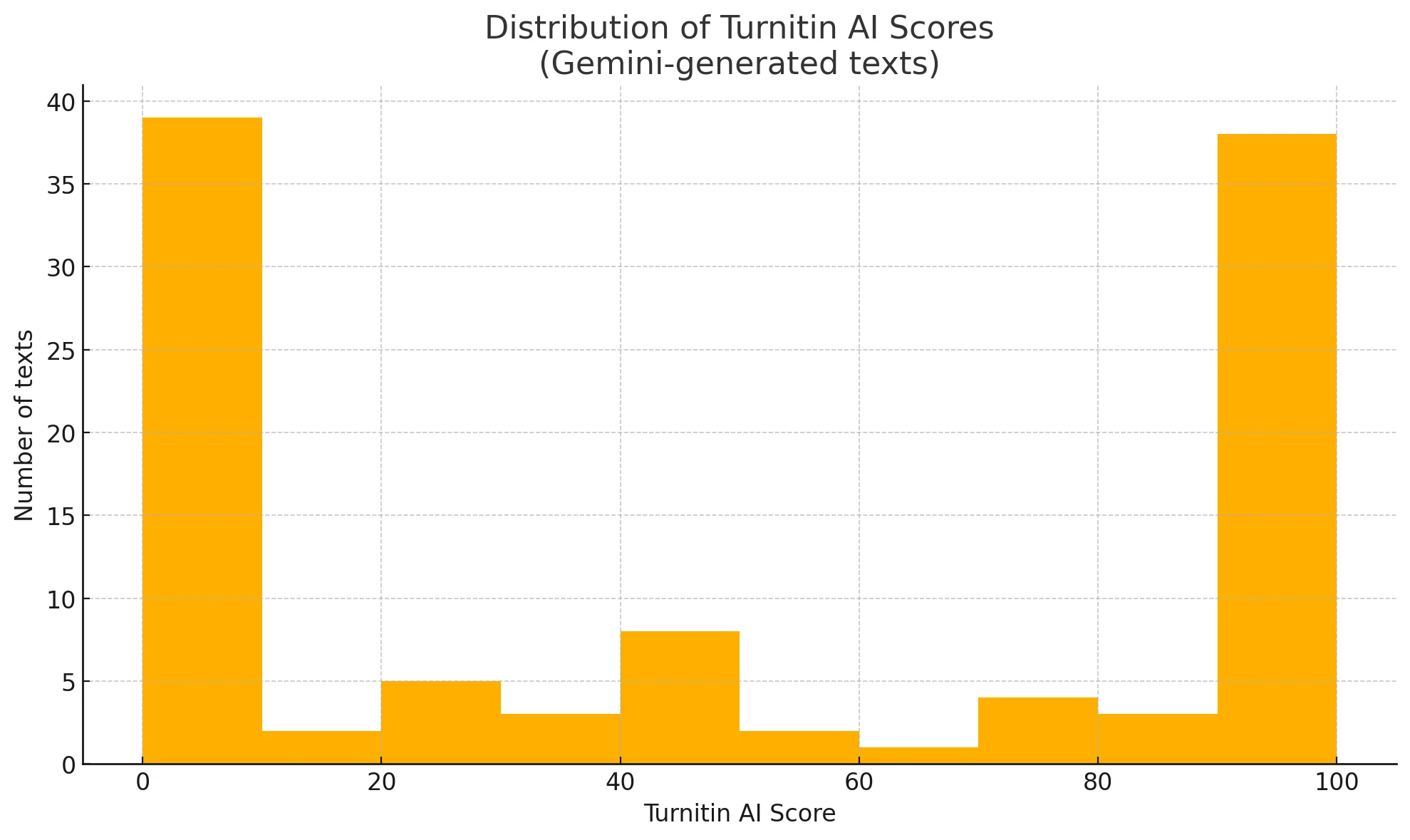
Turnitin’s AI detection has gotten significantly sophisticated after their major updates. They basically use a two-model approach which they often refer as AIW-2 (“AI Writing detector v2”) and AIR-1 (“AI Rewriting detector”). AIW-2 is a transformer-based model that scans each sentence to see if it’s more likely AI or human. If more than 20% of your text is flagged, they run AIR-1 for advanced checks on paraphrased or spun text.
What this means is they chop up your document in 5–10 sentence chunks, run them through AIW-2, if the aggregated result is at least 20% AI, then they highlight suspected AI text in blue and AI-paraphrased text in purple. This is how they figure out if you have used Gemini or any other LLM for your assignment.
What makes Turnitin so advanced?
- It uses a transformer-based classifier (rather than simple heuristics) that captures deeper relationships in text. This approach is not only about counting perplexities or bursts in your writing but understanding the style of AI text.
- They also rely heavily on prior data of human and AI-generated text, which includes non-native English, paraphrased text, and more. If your text somewhat aligns with these known AI patterns, it gets flagged.
- They have advanced paraphrase detection (AIR-1) that specifically checks for typical rewriting or odd synonym swaps often coming out of an AI.
Accuracy of Turnitin vs. Gemini – The numbers
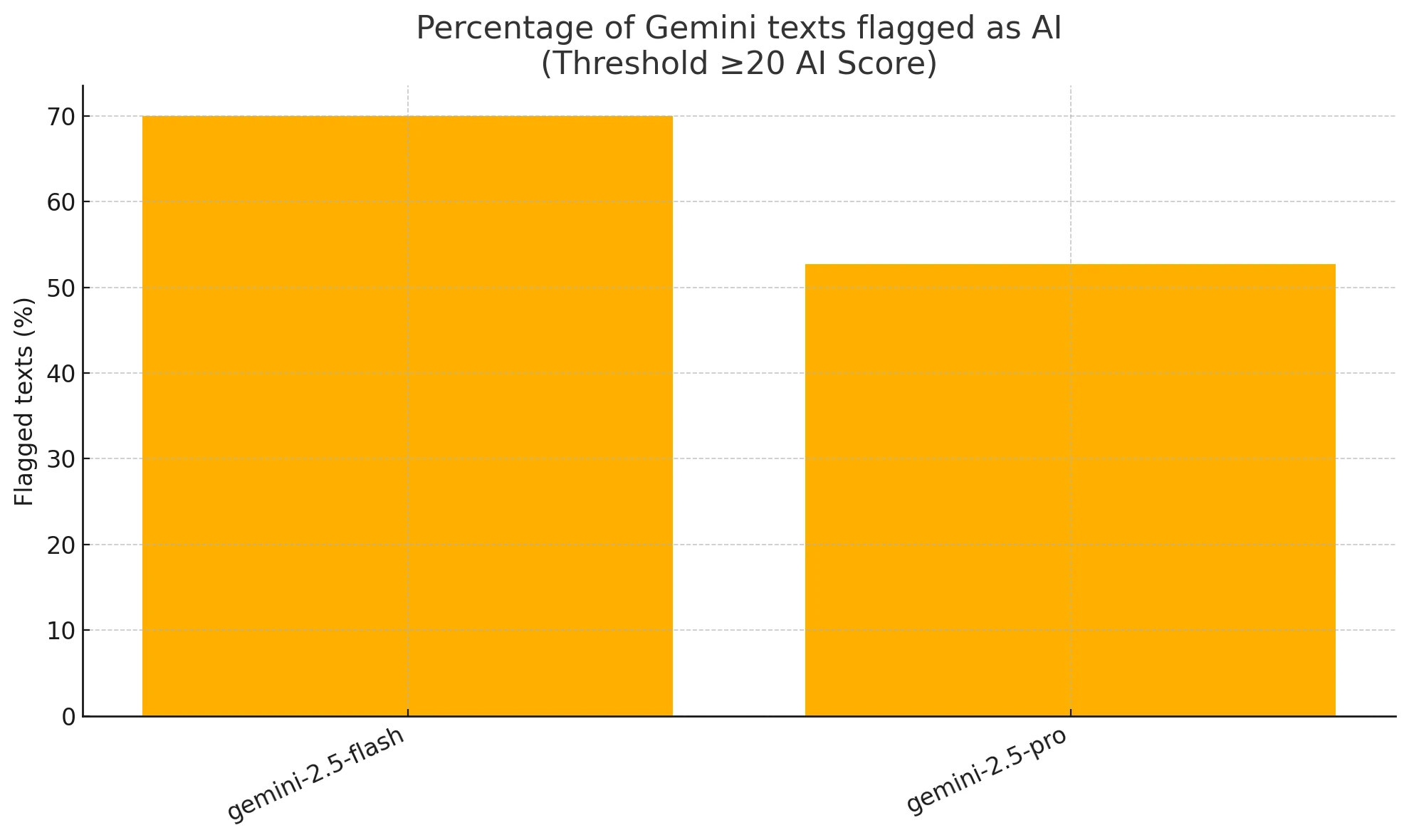
So, let’s get into the real talk: Can Turnitin detect Gemini? From the data we have, it seems Turnitin flags about ≈ 61% of the 105 Gemini-generated passages if you use a “flag if AI-score ≥ 20%” rule. This means 4 out of 10 passages got missed. That’s a decent chunk slipping by undetected.
Interestingly, not all Gemini versions are the same. gemini-2.5-flash was flagged around 70% of the time, while gemini-2.5-pro was only flagged 53% of the time. That is almost half for the pro model, which apparently has more fluent capabilities.
When Turnitin is only used at a very high confidence threshold (≥90% certain), you see the detection rate falls drastically to around 36%. So you can see that if an instructor decides to penalize work only when Turnitin is 90% sure, the majority of AI texts might slip under the radar.
A short verdict on reliability
All of this basically says Turnitin’s AI detection, while sophisticated, is definitely not 100%. With Gemini specifically, you could experience a false-negative rate of anywhere from 30–50%. This indicates that if a student tries to pass off Gemini-generated text as their own, Turnitin won’t always catch it. But it also means that some of it gets flagged, so it’s not a free pass.
That’s why many experts advise not to rely solely on Turnitin’s AI reports for high-stakes decisions. Yes, the AI detection is good, but it is no silver bullet. You would want additional evidence, such as writing samples, revision history, or student interviews, before concluding any misconduct.
Common Triggers for Turnitin’s AI detection
- Next-token predictability: If your text is too consistent or mechanical in the way it chooses words.
- Burstiness: AI writing tends to be smooth and uniform, while humans usually vary sentence lengths and structures.
- Favored phrases and token distributions: LLMs (like Gemini) often reuse academic expressions or transitional words that stand out in Turnitin’s analysis.
- Paraphrase patterns: If you used Gemini to rewrite someone else’s text, AIR-1 can detect suspicious synonym-swaps, weirdly restructured sentences, etc.
Frequently Asked Questions
Q1. Does Turnitin detect Gemini?
Yes, Turnitin often detects Gemini. However, the detection rate sits around 61% overall, meaning 4 out of 10 Gemini-generated passages might sneak through undetected if the threshold is 20%.
Q2. Is using Gemini plagiarism?
No, using Gemini to generate or rewrite text in itself is not necessarily plagiarism if you’re reworking your own material. But it can trigger Turnitin’s AI detection, leading to questions from your instructors.
Q3. What if Turnitin says “<20%*”?
Turnitin only shows a numeric percentage if it detects AI content ≥20%. Otherwise it says “<20%*” (inconclusive). This is basically an internal threshold to avoid too many false-positives.
Q4. Can I just rely on Turnitin’s AI detector for punishing misconduct?
No, you shouldn’t. Turnitin’s own best-practices mention that instructors should corroborate with other forms of evidence, such as reading style, prior drafts, or an oral defense.
Q5. Why is gemini-2.5-pro less detected by Turnitin?
Because it is likely a more refined and advanced language model that can produce more “human-like” text. Turnitin’s algorithms find it harder to pin down. Although it is not guaranteed that you will always fool the detector.
The Bottom Line
Turnitin is definitely a leader in AI detection, but it isn’t foolproof especially when it comes to advanced models like Gemini. While they claim a low false-positive rate (less than 1% when the AI score crosses 20%), they also miss a significant chunk of AI-based writing from Gemini. So, if you’re planning to rely 100% on Turnitin’s AI detection to catch Gemini writing, keep in mind that 4 out of 10 pieces might slip under the radar.
In my opinion, Turnitin’s AI detection is a good reference point but not a conclusive tool. If your university or institution is using it for high-stakes decisions, it’s best to gather as much supplementary evidence as possible, including writing drafts and interviews with the student. Relying on just one piece of software to judge academic work is always risky and can lead to wrongful accusations or missed cases.

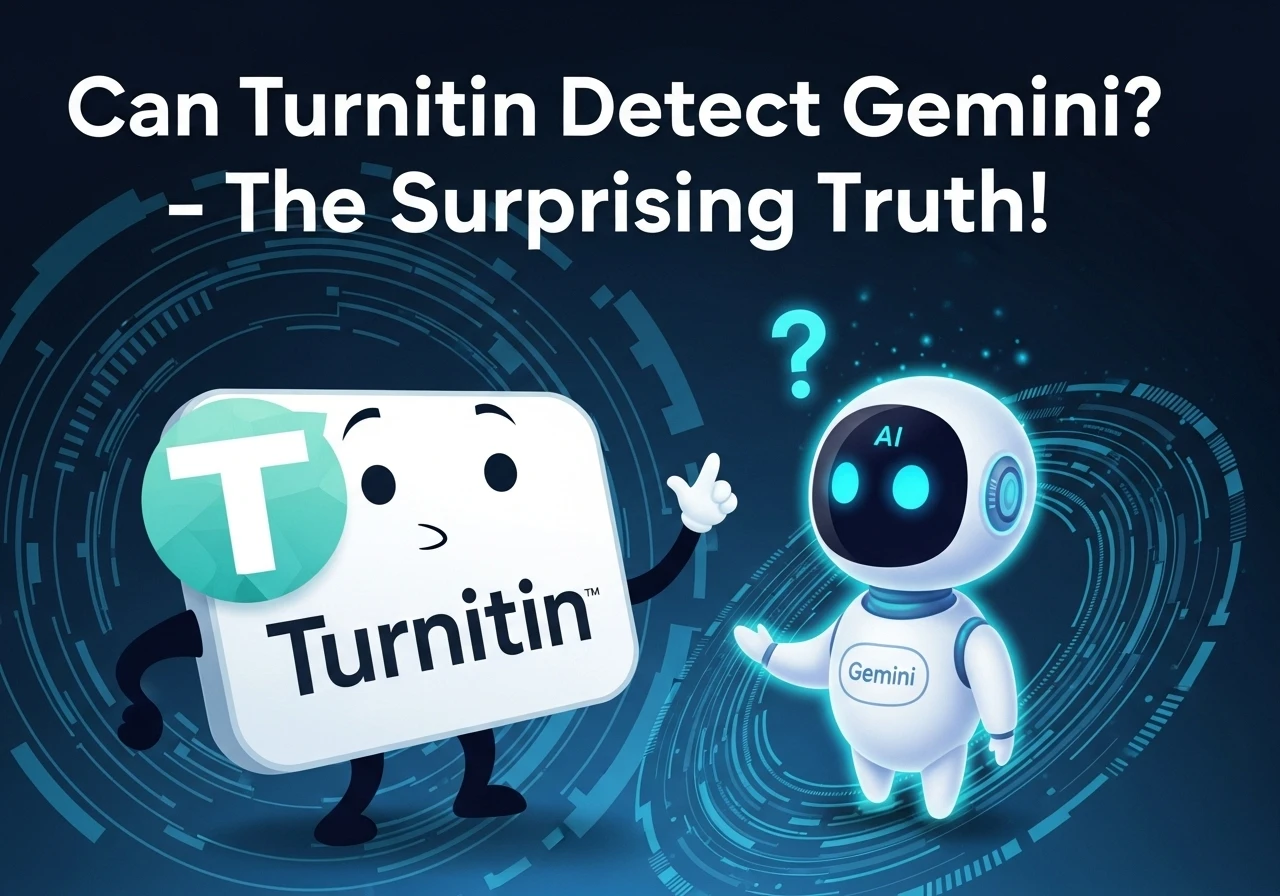
![[STUDY] Can Phrasly AI Humanizer Bypass ZeroGPT?](/static/images/can-phrasly-ai-humanizer-bypass-zerogptpng.webp)
![[STUDY] Can Phrasly AI Bypass Turnitin?](/static/images/can-phrasly-ai-bypass-turnitinpng.webp)
![[HOT TAKE] Is Winston AI or GPTZero more accurate?](/static/images/is-winston-ai-or-gptzero-more-accuratepng.webp)
![[NO NONSENSE ANSWER] Is Turndetect Permanently Down?](/static/images/is-turndetect-downpng.webp)
